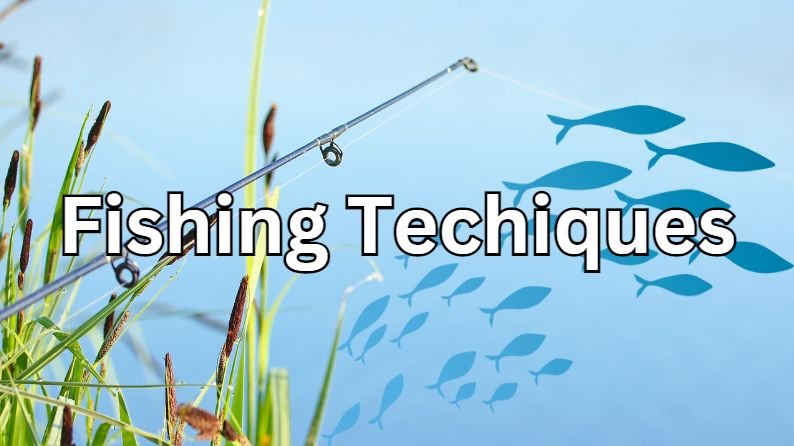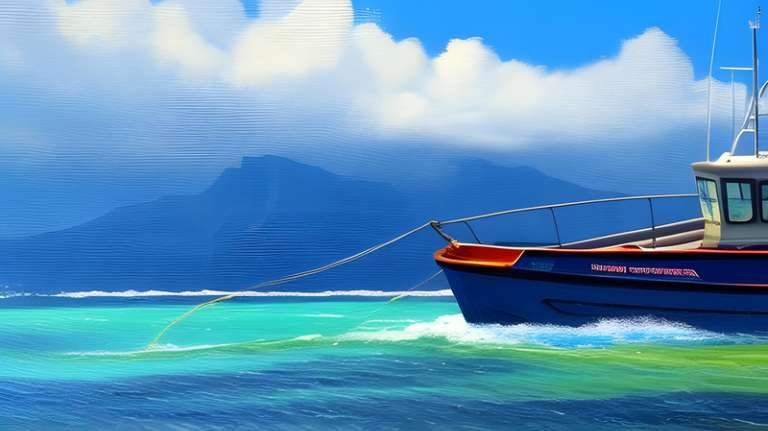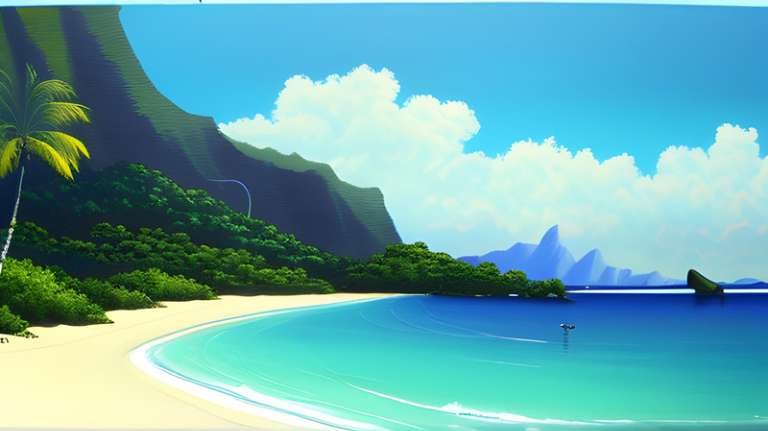Molokai Fly Fishing Guide: Top Spots, Techniques + Charters
Imagine yourself standing waist-deep in the turquoise waters of the Pacific, casting your line into the vast expanse of the ocean, surrounded by the breathtaking beauty of the Hawaiian island of Molokai, which offers a unique and diverse range of fishing opportunities, including deep-sea fishing, shoreline fishing, trolling, bottom fishing, and the focus of our discussion, fly fishing.
However, navigating the intricacies of Molokai’s fishing spots and techniques can be challenging for beginners and even experienced anglers. The island’s vast flats along the southern shoreline, its rich fishing heritage, and the importance of preserving its marine biodiversity through fishing licenses and regulations can seem overwhelming at first.
The solution? A comprehensive guide to fly fishing in Molokai. Whether you’re a seasoned angler looking to try new waters, or a beginner eager to learn the ropes, this guide will equip you with the necessary knowledge to make your fly fishing trip in Molokai a memorable one. Let’s dive in.
Key Takeaways
Unlock a treasure chest filled with unique experiences and unparalleled natural beauty:
- Molokai offers a diverse range of fishing opportunities, allowing anglers to explore deep-sea fishing, shoreline fishing, trolling, bottom fishing, and of course, fly fishing.
- The island’s southern shoreline is home to vast and intricate flats, making it a popular spot for fly fishing.
- To ensure a successful and enjoyable trip, it’s recommended to hire a fishing charter. These charters provide experienced guides and top-notch equipment, significantly improving your fishing experience.
- Molokai enforces fishing licenses and regulations to preserve its rich marine biodiversity. It’s crucial for anglers to respect and adhere to these regulations to maintain the health of the ecosystem.
Let’s explore in more detail.
Fly Fishing in Molokai

Discover the Richness of Fly Fishing
Traveling to Molokai is a journey through an angler’s paradise, characterized by diverse fishing spots and a deeply ingrained fishing heritage.
Popular Molokai Fly Fishing Spots
Molokai boasts several fishing spots, each offering unique opportunities for anglers.
Notable among these are the Kaunakakai Pier, Hale O Lono, and various spots along the North Shore.
However, the vast and intricate flats along the southern shoreline of Molokai are particularly popular for fly fishing. These flats provide an ideal habitat for a variety of fish species, offering a thrilling fishing experience.
Molokai’s Fishing Heritage and Cultural Significance
Fishing in Molokai is not just a recreational activity; it’s a part of the island’s cultural heritage and a testament to the deep respect the locals have for the ocean and its inhabitants.
This respect is reflected in the ancient Hawaiian fishing history, where fishponds played a significant role. These fishponds, built along the shoreline, allowed Hawaiians to cultivate and harvest fish, demonstrating their understanding and appreciation of marine ecosystems.
Fly fishing in Molokai is thus not just about the catch, but also about embracing the local fishing culture and respecting the ocean and its inhabitants. As you cast your line in the waters of Molokai, you become part of this rich heritage and tradition.
Fly Fishing Techniques and Tips

Master fly fishing with secret techniques and tips tailored for Molokai’s unique fishing conditions.
Molokai’s fishing spots require specific techniques to ensure a successful catch.
Fly fishing in the island’s shoreline, for instance, often involves blind casting and a nymphing-like retrieve. This method involves casting the fly without a specific target and retrieving it in a manner that imitates the movement of small aquatic creatures, enticing fish to bite.
Recommended Equipment for Fly Fishing in Molokai
The right equipment can make a significant difference in your fly fishing experience.
In Molokai, a 9 or 10 weight fly rod is recommended, along with a 15lb fluorocarbon leader. As for the flies, size 4 shrimp and crab patterns have proven to be effective.
Other essential equipment includes fishing reels, lures, fishing line, hooks, sinkers, a tackle box, a landing net, pliers, and a cooler to store your catch.
Tips for Targeting Specific Species
Molokai’s waters are teeming with various species of fish, each requiring a unique approach. Bonefish, trevally, and snapper are among the popular targets for fly fishing, and you shuold understand their behavior, preferred habitats, and feeding patterns to significantly increase your chances of a successful catch.
Importance of Hiring Local Guides
Local guides bring invaluable knowledge and expertise to your fishing trip. They know the best fishing spots, understand the local fish species, and are familiar with the current conditions and regulations.
Hiring a local guide not only increases your chances of a successful fishing trip but also ensures you respect the island’s fishing traditions and regulations.
Conservation and Fishing Regulations in Molokai

Respecting the bounty of the sea and preserve the fragile ecosystems.
The island’s conservation efforts are in place to protect the marine ecosystem and preserve fish populations. These efforts ensure that future generations can enjoy he richness of the island’s biodiversity.
As anglers, it’s our responsibility to support these initiatives by adhering to local fishing regulations.
Local Fishing Regulations
Fishing regulations in Molokai include bag limits, catch limits, and size limits for various species.These regulations are designed to prevent overfishing and maintain the health of fish populations. It’s important to familiarize yourself with these rules before you start fishing to ensure you’re not inadvertently harming the marine ecosystem.
Ethical Fishing Practices
Ethical fishing practices go beyond simply following the rules. They involve respecting protected areas, practicing catch-and-release when appropriate, and minimizing your impact on the environment. By embracing these practices, we can contribute to the conservation of Molokai’s marine life and ensure the sustainability of its fishing tradition.
Remember, fishing in Molokai is not just about the thrill of the catch. It’s about respecting the ocean and its inhabitants, and contributing to the preservation of this beautiful island’s natural heritage.
Weather, Seasons, and Fly Patterns in Molokai

Your success may be subject to the rhythm of the seasons and the whims of the weather.
And there isn’t much you can do about the weather, other than plan accordingly.
The weather conditions and seasons in Molokai can significantly impact your fly fishing experience. Different species of fish are more active during certain seasons, and adverse weather conditions can make fishing challenging. Check local fishing reports to get up-to-date information on the best times to fish for specific species.
Effective Fly Patterns
Fly patterns are designed to imitate the natural food sources of fish. In Molokai, crab or shrimp patterns are known to be effective for bonefish.
However, local anglers may have their own favorite or unique fly patterns that have proven successful in Molokai’s fishing waters. Experimenting with different patterns and learning from local knowledge can enhance your fishing experience.
Fishing Charters and Local Guides in Molokai

Find the best fishing spots with local experts as your guides.
Fishing charters offer comprehensive fishing experiences, providing services that include experienced guides and top-notch equipment.
Renowned Molokai fishing charters such as Captain T Charters, Hallelujah Hou Fishing, and Alyce C Sportsfishing come highly recommended.
Importance of Hiring Local Guides
Local guides possess in-depth knowledge of Molokai’s fishing spots, conditions, and species.
Their expertise can significantly enhance your fishing experience, helping you navigate the island’s fishing spots, understand local regulations, and target specific species more effectively.
Hiring a local guide is an investment in a successful and enjoyable fishing trip in Molokai.
Flight and Travel Considerations for Fishing in Molokai

Plan your fly fishing trip to ensure a smooth journey and avoid hassles.
When planning your trip, it’s crucial to book flights, accommodations, transportation, and guides in advance. This forward planning ensures you can focus on enjoying your fishing experience without worrying about logistical details.
Inter-island flights in Hawaii are frequent, affordable, and easy to book, making Molokai easily accessible from other Hawaiian islands.
Additionally, consider hiring a local guide or booking a fishing charter in advance to ensure availability during your stay.
Embracing the Experience of Fishing in Molokai
Welcome to a journey into tradition, camaraderie, respect for the ocean, and appreciation for its bounty (and hopefully lots of big catches)
The experience of fishing in Molokai is a unique blend of thrill, camaraderie, and respect for the ocean and its inhabitants.
It’s about embracing the local fishing culture, respecting local communities, and appreciating the marine ecosystem.
Both beginners and advanced anglers are welcome to come fishing in Molokai. We promise it will be a rewarding and unforgettable experience.
Remember, it’s not just about the catch—it’s about creating memories and respecting the ocean and its inhabitants.
Frequently Asked Questions
What are popular fishing spots in Molokai?
Kaunakakai Pier, Hale O Lono, North Shore, and various spots along the southern shoreline are popular for fishing in Molokai.
What fishing techniques are used in Molokai?
Deep-sea fishing, shoreline fishing, trolling, bottom fishing, and fly fishing are common in Molokai. For fly fishing, techniques like blind casting and nymphing-like retrieve are often used.
What fishing charters are recommended in Molokai?
Captain T Charters, Hallelujah Hou Fishing, and Alyce C Sportsfishing are recommended fishing charters in Molokai.
What are the fishing regulations in Molokai?
Molokai enforces fishing licenses and regulations to preserve marine biodiversity. These regulations include bag limits, catch limits, and size limits for various species. Please check the latest regulations on dlnr.hawaii.gov website.
What equipment is recommended for fly fishing in Molokai?
A 9 or 10 weight fly rod, 15lb fluorocarbon leader, and size 4 shrimp and crab patterns are the best fly fishing gear.
What is the cultural significance of fishing in Molokai?
Fishing in Molokai is a part of the island’s cultural heritage, emphasizing respect for the ocean and its inhabitants. Fishponds played a significant role in ancient Hawaiian fishing history.
What are some tips for fly fishing on the island?
Understanding the behavior, preferred habitats, and feeding patterns of targeted species can increase chances of a successful catch. Hiring a local guide can also enhance the fishing experience.

